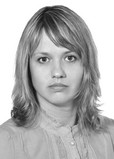Training process management model for young ski jumpers based on control over body composition and physical fitness
Фотографии:
ˑ:
PhD, Associate Professor E.O. Rybakova1
PhD, Associate Professor T.N. Shutova2
PhD, Associate Professor M.A. Vozisova1
1Tchaikovsky State Institute of Physical Culture, Tchaikovsky
2Plekhanov Russian University of Economics, Moscow
Objective of the study was to adjust the process of training of the 12-15 year-old ski jumpers by conducting a control over their body composition and physical fitness.
Methods and structure of the study. The study was carried out in 2019 at the premises of the Federal Training Center for Winter Sports "Snezhinka" named after A.A. Danilov (Tchaikovsky town) and involved 74 athletes (including 25 girls and 49 boys of 12-15 years of age) having the sports qualifications of II and III sports category. We developed a mechanism of athletic training process control, studying of the body component composition, physical fitness and sports results. We analyzed the gender differences in the 12-15 year-old male and female athletes. The training process management mechanism included individual dynamics of physical fitness and sports card, rating system, dietary recommendations.
Results of the study and conclusions. The girls outperformed the boys in three control exercises characterizing flexibility, static muscle strength and speed endurance; however, the boys significantly outperformed the girls in the speed-strength exercises (standing long jump and standing triple jump). We detected an increase in the amount of adipose tissue in the girls - 28.2%, which necessitated the use of increased aerobic loads, individual dietary recommendations. The muscle component of the body was significant higher in the young males (25.3%) as compared to the females (19.1%).
The training process management model for ski jumpers proved its significance: the bio-impedance analysis enabled to adjust the nutrition program within the season, prevent a decrease in the young males’ body fat component, which was dangerous to their health. The body mass index and body fat component of all athletes decreased and approached the reference values, and we managed to increase the level of special physical fitness, improve athletic performance.
Keywords: body component composition, ski jumping, gender differences, individual sports card, athletic training.
References
- Zebzeev V.V., Zdanovich O.S., Barinov M.V. Aktualnyie napravleniya pedagogicheskogo kontrolya v lyzhnom dvoebore i pryzhkah na lyzhah s tramplina [Actual directions of pedagogical control in Nordic combined and ski jumping]. Fizicheskaya kultura, sport, turizm: innovatsionnye proekty i peredovye praktiki [Physical education, sports, tourism: innovative projects and best practices]. Proc. Intern. res.-practical Conf. 90th anniversary of the physical education department. L.B. Andryushchenko, S.I. Filimonova [ed.]. M., 2019.pp. 655-659.
- Lebedev G.K. Otsenka parametrov spetsialnoy podgotovlennosti yunykh prygunov na lyzhakh s tramplina [Assessment of special fitness characteristics of junior ski jumpers]. Vestnik sportivnoy nauki. 2018. no. 3. pp. 19-24.
- Lebedev G.K. Otsenka urovnya tekhnicheskoy podgotovlennosti prygunov na lyizhah s tramplina na bazovyk etapakh podgotovki [Assessment of technical fitness level of ski jumpers at basic training stages]. Uchenyie zapiski universiteta im. P.F. Lesgafta. 2018. no. 1 (155). pp 142-147.
- Shutova T.N., Rybakova E.O. Izuchenie sostava tela zhenshchin i muzhchin raznykh vozrastnykh periodov v upravlenii sostoyaniem zdorovya [Study of body composition in women and men of different age periods in health management]. Uchenye zapiski universiteta im. P.F. Lesgafta. 2018. no. 12 (166). pp. 299-303.
- Müller W. Determinants of ski-jump performance and implications for health, safety and fairness (2009). Sports Medicine. No. 39. pp.85-106.
- Müller S, Kreibich S., Wiese G. (2014). Analyse der nationalen und internationalen leistungs entwicklung im Skispringen. Training swissenschaft. No. 21 (2). pp. 97–111.
- Shutova T., Vysotskaya T. (2019). Development of methods of population’s physical training by using various types of fitness based on body composition`s accounting. Journal of Human Sport and Exercise, 14 (4proc). pp.877-S884. doi:https://doi.org/10.14198/jhse.2019.14.Proc4.50.
- Shutova T.N. (2017). Modeling of fitness technologies in the process of physical education of students on the basis of diagnostics "Esteck system complex". Theory and practice of physical culture. No 9. pp. 30-32.
- Vodicar J., Jost B. (2011). The relationship between selected kinematic and length of jump of the ski-flying competition. Kinesiology. No. 43 (1). pp. 74-81.



 Журнал "THEORY AND PRACTICE
Журнал "THEORY AND PRACTICE